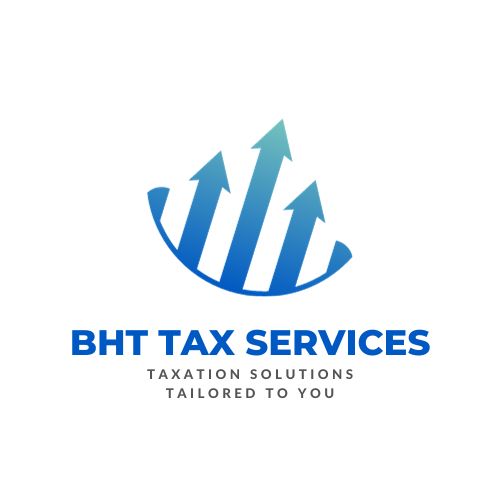
Understanding Capital Gains Tax: How It Works and How to Lower It
Capital gains tax (CGT) is a crucial component of tax law that affects individuals and businesses when they sell an asset for more than its original purchase price. Understanding how it works and exploring strategies to reduce your CGT liability can significantly impact your financial outcomes. In this comprehensive guide, we delve into the intricacies of capital gains tax and provide actionable tips to help you minimize its impact.
What Is Capital Gains Tax?
Capital gains tax is a tax levied on the profit earned when you sell a capital asset, such as real estate, stocks, bonds, or other investments. The tax applies only to the gain—the difference between the asset’s selling price and its original purchase price.
Key Features of Capital Gains Tax
- Taxable Events: CGT is triggered when a capital asset is sold, exchanged, or otherwise disposed of.
- Exemptions: Some assets, such as personal residences, may qualify for exemptions or reduced rates.
- Tax Rates: CGT rates vary based on the holding period of the asset and your income bracket.
Types of Capital Gains
Capital gains are classified into two categories:
Short-Term Capital Gains
Short-term capital gains are realized when an asset is sold within one year of purchase. These gains are typically taxed at the same rate as your ordinary income, which can range from 10% to 37% in the United States.
Long-Term Capital Gains
Long-term capital gains are earned on assets held for more than one year. These gains are taxed at preferential rates, ranging from 0% to 20%, depending on your income level. The lower rates incentivize long-term investment strategies.
How Capital Gains Tax Is Calculated
To calculate CGT, follow these steps:
- Determine the Asset’s Basis: The basis is usually the purchase price plus any associated costs, such as commissions or improvements.
- Calculate the Gain: Subtract the basis from the asset’s selling price.
- Apply Exemptions or Deductions: Check if the transaction qualifies for any exemptions.
- Calculate the Tax: Apply the appropriate tax rate based on the holding period and your income level.
Exemptions and Special Cases
Primary Residence Exclusion
If you sell your primary home, you may exclude up to $250,000 of gain ($500,000 for married couples) from CGT, provided you meet ownership and use requirements.
Inheriting Assets
Inherited assets often receive a “step-up” in basis, which adjusts the asset’s value to its fair market value at the time of inheritance. This can significantly reduce or eliminate CGT liability.
Retirement Accounts
Gains within retirement accounts like IRAs or 401(k)s are tax-deferred, meaning you won’t pay CGT until you withdraw funds.
Strategies to Lower Capital Gains Tax
Reducing your CGT liability requires proactive planning and strategic financial decisions. Here are proven strategies to consider:
1. Hold Assets for the Long Term
Holding assets for more than one year can significantly lower your tax rate, as long-term gains are taxed at preferential rates.
2. Offset Gains with Losses
Use the strategy of tax-loss harvesting by selling underperforming assets to offset gains from other investments. You can deduct up to $3,000 of net losses annually against ordinary income and carry forward unused losses.
3. Maximize Retirement Accounts
Investing through tax-advantaged accounts like IRAs and 401(k)s can help defer taxes on gains, allowing your investments to grow tax-free until withdrawal.
4. Reinvest in Opportunity Zones
Investing in designated Opportunity Zones allows you to defer and potentially reduce CGT on reinvested gains while supporting economically disadvantaged areas.
5. Utilize the 1031 Exchange for Real Estate
In real estate transactions, a 1031 exchange lets you defer CGT by reinvesting proceeds into a similar property within a specified timeframe.
6. Make Charitable Contributions
Donating appreciated assets to qualified charities not only supports a cause but also eliminates the need to pay CGT on the appreciation.
7. Leverage Gift Tax Exclusions
Gifting assets to family members can reduce your taxable estate while transferring gains to individuals in lower tax brackets.
The Impact of State Taxes on Capital Gains
In addition to federal CGT, some states impose their own taxes on capital gains. Rates and rules vary by state, so it’s essential to consider your state’s tax policies when planning your transactions.
States Without Capital Gains Tax
States like Alaska, Florida, and Texas do not levy a state-level CGT, providing significant tax savings for residents.
Understanding the Implications of CGT on Investments
Capital gains tax can have a substantial effect on your investment returns. By factoring CGT into your investment decisions, you can optimize your portfolio for after-tax returns. Regular portfolio reviews and consultations with a financial advisor can ensure that your investment strategy aligns with your tax planning goals.
Conclusion
Capital gains tax is an inevitable aspect of investment and asset management, but understanding its nuances and implementing tax-saving strategies can help you minimize its impact. Whether it’s leveraging exemptions, holding assets for the long term, or utilizing tax-advantaged accounts, careful planning is the key to preserving your wealth.
For more insights on how to manage your taxes and boost your financial outcomes, consult with a tax professional who can tailor strategies to your unique situation.
